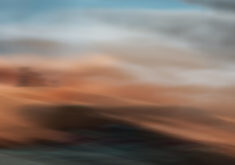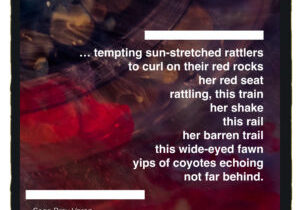Treasures in Limitations
How do you feel when starting a new creation, when you’re facing the blank page, the blank canvas, the emptiness of a space you propose to create something amazing in? No matter your answer, getting started on a new project is hard. That doesn’t mean you can’t also be excited or find the openness of all the possibilities immensely invigorating. Love it or hate it, making something from nothing is hard work and, on some level, scary.
Overcoming that fear and doing that hard work can keep some creatives from starting a project. For others, they constantly question the first steps they take, trashing them before they go too far, starting over and over again in order to avoid the possibility that their first choices were “wrong”.
So, how do you get past that? It’s strangely simple. You eliminate that initial first step by allowing outside sources to give you limitations.
You see, if we’re given the first sentence of a story, a shape, texture, or color palette, or the first chord of a song to work with, most of us will just run with it. Having that first essential step behind us, for one, allows us to move forward with more confidence. Secondly, they become concrete things we feel obliged to include, allude to, or otherwise integrate into our work. This creates a motivating and grounding certainty that reduces the blank page from boundless possibilities to a far more comfortable finite set of options.
But that’s not all limitations do. They also get the wheels in your problem-solving brain going.
Now, what the heck does problem-solving have to do with being creative?
Everything!
If you haven’t realized it yet, creativity is all about problem-solving. It ranges from broad concepts (How do I get this thing in my head out into the world? How do I express my ideas so that other people see and understand what I see or think?) To all the detailed decisions (How do I mix the colors I want? How do I describe that moment or emotion? What dance step is needed to flow into this movement? What notes are needed to pump up this melody?) Creating is primarily a series of questions and answers that often require both sides of your brain to work through them.
See. Problem-solving.
So, when you give yourself limitations, the first thing your brain does is ask questions. And they aren’t just general questions like “What do I want to make/write/do?” Limitations give your brain very specific questions about what restrictions will you have, what the associated concepts mean to you, and how you want to portray them.
Once you start pondering these questions, your creative mind kicks it into gear with no effort at all.
Those Outside Sources
When I speak of outside sources creating limitations, I am speaking of things that push you outside your realm and usual sources of inspiration. The most common term for this is prompts, although that generally refers to ideas given to you by another person, such as those found on a website or in a book. Those can be great prompts, but don’t ignore the source of prompts all around you.
For instance, you can create a self-prompt which simply means that you let serendipity offer you your limitation (telling yourself you will create something based on the first phrase the next person says to you, the first captivating shape you find when you step out your door, the first image that comes up on your social media feed, etc.)
You can also draw prompts from your favorite creators, although ideally, from someone who does not work in your medium. So, if you are a visual artist, open a book by a favorite author and create something based on the first description in the chapter you open to. If you write, grab a book by your favorite visual artist or find their website and use the first image you see as the basis for a story or poem. If you are a performance artist, you can use either of the above sources.
One of my favorite ways to create a prompt is to write, draw, or just doodle when I first wake up, while I’m still in bed. As I mentioned last week, I write first thing in the morning before I get out of bed but sometimes structured writing doesn’t come to me very readily. So, I resort to creative free writing, drawing, or doodling for a few minutes and write based on something that comes up from those. Your brain can come up with the coolest things when you’re half-asleep but if you don’t have that opportunity, you can still give yourself five minutes to write down or sketch whatever comes to mind and choose one thing from that session as a prompt.
Prompt Challenge
So, there is one issue with going out and looking for your own prompts. Not having someone tell you what to do means you may question the prompts that you choose. And that’s a little like questioning your first steps when you approach the blank page issue. If you have worked on prompts for a while, you probably have enough discipline to get yourself to do the first thing that comes up, but if you haven’t, then using prompts from someone else tends to remove the inclination to question the prompt.
With that in mind, I decided I’d like to offer prompts at least once a month. You can approach these however you like, but I do recommend choosing a primary approach in trying to stick with it. For instance, you can approach each prompt by creating a one-off project or you can use the prompt to do a small piece every day (or once a week, or three times a week) for the next month. Just be sure it’s reasonable and attainable. Then, with a plan in place, it will be easier for you to jump into it each month you want to take it on.
Keep in mind that prompts are a very flexible a source of inspiration because you can interpret them in absolutely any way you like. For instance, if the prompt is something as simple as “blue”, you could create visual art that’s blue or write about things that are blue, or you could create work based on the emotion of feeling blue or use things that rhyme with blue but not create or write about the color blue at all. It is completely up to you.
So, what do you say? You can use my prompt or you can self-prompt but how about giving yourself this one month, to try a new challenge and see what comes of it?
August Prompt:
Think of a place that you feel at home in but that is not your home and come up with one singular object or person there that embodies the essence of why it feels like home. Create something based on that single item or person.
I’m going to join you in this. I’m going to use this prompt as a jumping off point for writing one poem a week. Then I’ll share one at the end of the month.
Let’s do this!










What a creative way to overcome the fear of the blank page or canvas. Or any art endeavor. Thank you.
Thanks! I’m glad that struck a cord for you!
Just now reading this posting. I think this is a wonderful idea. Especially, for those of us with so many ideas crowding our brain. I often struggle with what direction to create in. When I have a prompt or assignment it makes it so much easier to focus and I get excited about starting new work. Running with an idea is the best part of the process. Now to work on knowing how and when something is finally finished.
Yes, run with those ideas. Knowing when something is finished… sigh. They never are. There are always things we can see to improve or fix but we have to say “It says or shows what I need it to show” and work on recognizing when a piece will look complete to the viewers, which, luckily, is usually much earlier than we tend to leave it. 🙂